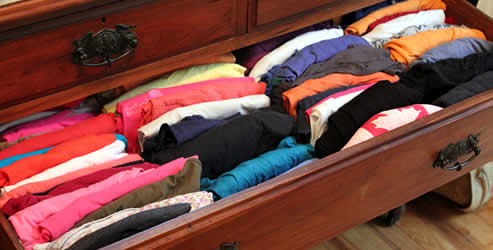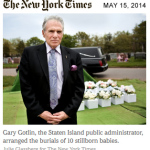
Holidays are often difficult, but they can be unbearable when you are coping with the absence of a loved one. You have likely been told (or read) that it is healthy to start a few new holiday traditions of your own as you rebuild your life after loss.
That said you may think I am stretching the idea with what I am about to propose—but don’t automatically dismiss what will take your mind away from the worst of it and help you face the coming new year.
Tackle a hard-to-face job by making it part of a larger one
I doubt that sorting your deceased loved one’s belongings is on your holiday to-do list. But if you are 9-12 months post-loss, I suggest you roll the small but difficult task into a larger project. So what is the larger project? Declutter your entire home.
Don’t stop reading yet. The December project I am proposing will
- help you shift your focus away from the holidays;
- provide those less fortunate with holiday gifts (Goodwill, etc); and
- move you into the grey weather of January/February feeling lighter and more organized.
Author and grief counselor Francis Weller says “to work thru grief you must engage it, sit with it, and mull it over.” Unfortunately you know this all too well. So why not engage, sit with and mull over what your house or apartment holds as part of your overall process.
The magic of tidying
There is a reason The Life-Changing Magic of Tidying Up: the Japanese Art of Decluttering and Organizing has sold over 2 million copies. It is a good book. The author, Marie Kondo, was only 15 years old when she started to focus on household management. Ultimately she turned her passion into a profitable business.
Wisely Kondo calls tidying “a dialogue with oneself” about what you want to keep, give way or discard. What you keep falls into function, information and emotional attachment, i.e. 1) what you still use, 2) what provides information and 3) what has sentimental value.
The following are a few highlights that will help you through the process:
- Always sort by category not location. Tidying by location is a big mistake. One of the goals is to never again store the same item in more than one place.
- The category order from start to finish is: clothes, books, papers, miscellaneous items, and mementos. Save the sorting of mementos to last as it is the hardest category and could stall your efforts.
- Don’t even think about putting things away until you finish sorting an entire category.
- If you have trouble discarding ask yourself
- Why do I have the item in the first place?
- When did I get it and what meaning did it have for me then?
- Is it important to me now?
- What is its true purpose in my life? Has it fulfilled its role?
- Clothing: Remove clothing from hangered closets and drawers and put onto floor. (I suggest you put down some bed sheets first.) This means pulling clothes from entire house and bringing them into one area. Do not clean one closet at a time. Place clothing on floor by subcategories; tops, bottoms, jackets/coats/suits; then socks, underwear, handbags (to be stored inside of each other), accessories, and finally shoes.
- When sorting seasonal clothing, ask: “Would I want to wear this right away if the temperature suddenly changed?”
- Forget about demoting clothing to loungewear or dirty-job clothing.
- Consider moving what is on hangers to drawers – and fold or stack vertically—instead of layering one on top of another. (I am going to weigh in here. I find it easy to place rolled items side by side tightly, often in two layers. For example when I open my T-shirt drawer I can see each shirt/color easily when rolled side by side. For deeper drawers I install clear plastic rectangular bins (without lids) in my drawers so items don’t move around when one item is removed. I also roll casual pants and store side by side in two layers. When you use this method you don’t forget what you own.
- Bathroom, laundry and kitchen drawers: dump everything onto your kitchen table and countertops instead of the floor (we have to protect our knees after all!). Again sort items by category and return to a drawer where item will be used, not necessarily where it came from. This is important. Yes, at first you may have to stop and think where the item is located, but you will soon appreciate it is where you use it most often.
- Don’t bring your family into the process at this point. As you move through the house, set aside favorite pieces of your loved one’s clothing and mementos. When your declutter is finished, invite family members to decide what they might want to keep.
Kondo wisely counsels: “life becomes far easier once you know that things will still work out even if you are lacking something.” You may have a way to go before you believe it—but for right now, your closets and drawers are a good start to accepting the thought.
I would love to hear how your “tidy” project went. Ok? Go up to “contact” on the navigation bar, and let me know.
Signing off—I send you the very best from my heart to the very best in yours…
I only covered a portion of the book. If you want to read more of the life-changing magic of tidying up – click on the book.
Here is Francis Weller’s new book I referenced. It deals with grief on a personal as well as a global scale. The Wild Edge of Sorrow: Rituals of Renewal and the Sacred Work of Grief.
































